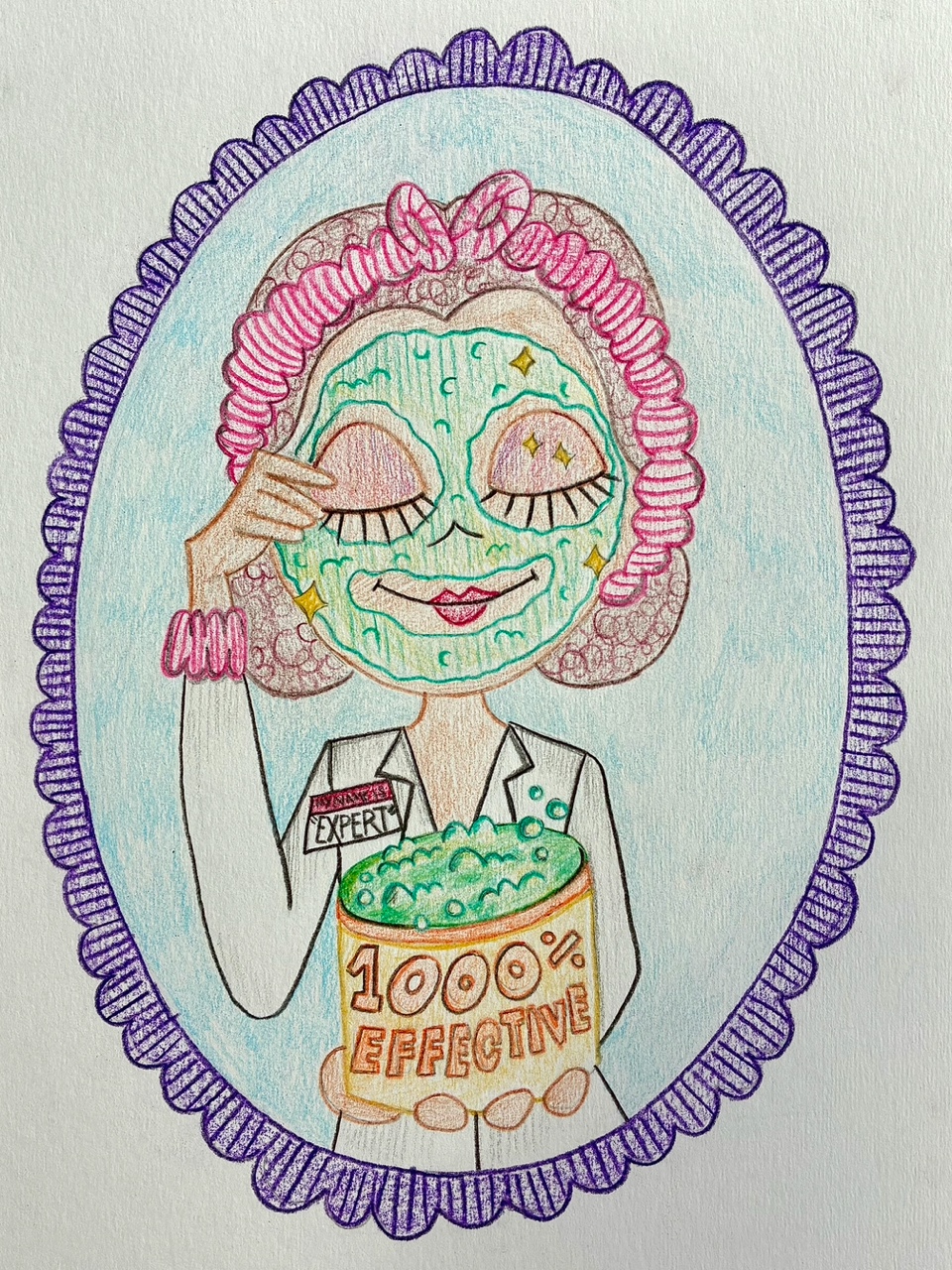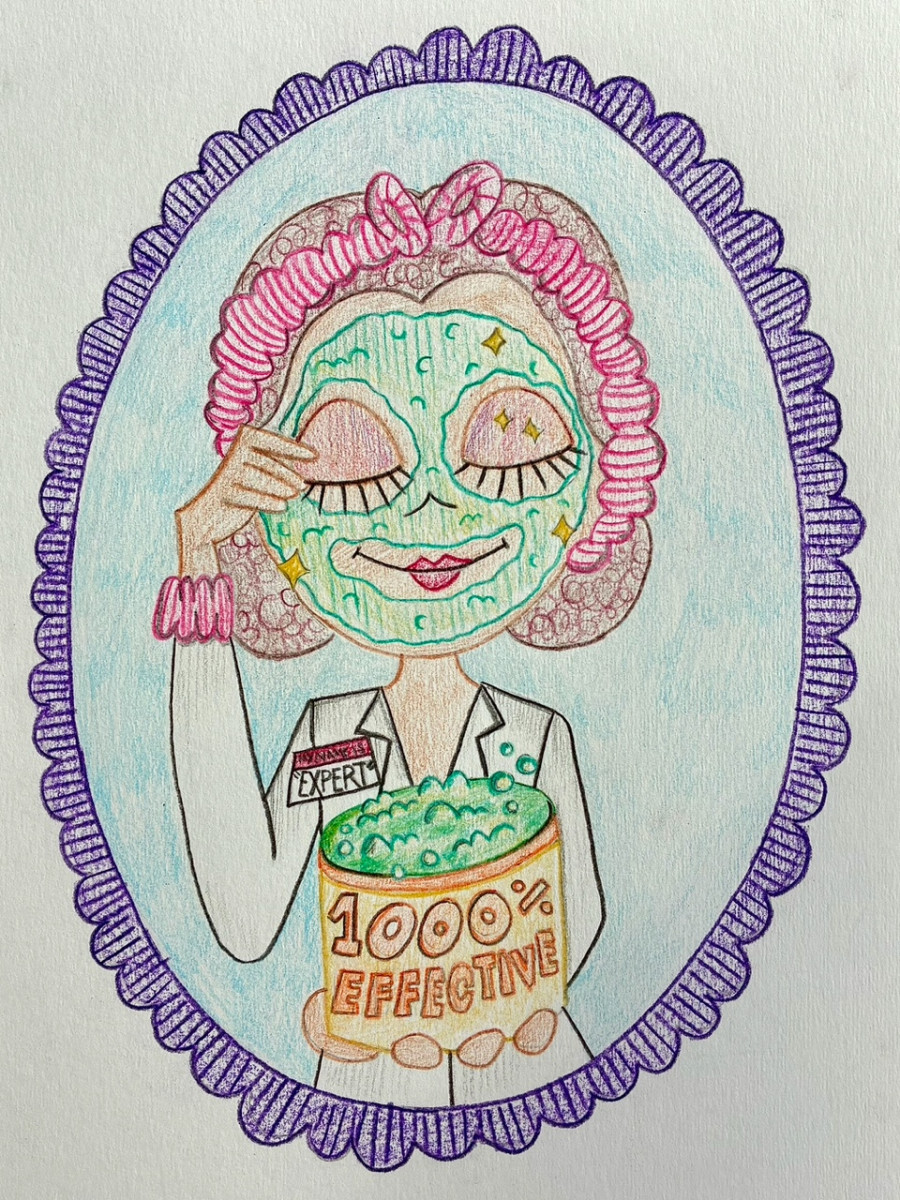Experts weigh in on what skin care trends really work and what could harm your skin.
On the “SkinTok” side of TikTok, it is not uncommon to see people slathering beef tallow on their faces and claiming that the $600 Dr. Dennis Gross LED mask cured their acne in just three days.
But some social media users may wonder if any of this actually works—how much of it is just social media hype? With paid sponsorships taking a central space on platforms such as Instagram and Tik Tok, it might be hard to tell which trends are legit, what’s risky and what can cause harmful skin conditions.
A 2024 report published by marketing company IZEA found that 67 per cent of Canadian 18-to-29-year-olds have purchased a product after seeing it used by an influencer, with 40 per cent of subjects saying they researched a product on TikTok before buying it.
According to Toronto-based dermatologist Dr. Sandy Skotnicki, social media has had a mixed impact on skincare routines. She said that while social media has made people more skincare informed, it also stems from a culture of miracle cures and overconsumption.
She explained that a product promoted by an influencer may not work for everyone, particularly because personalized skincare advice should come from understanding one’s own skin.
“Everyone is a skincare expert—you may think you have rosacea and buy products for it, but maybe you don’t,” Skotnicki said.
To separate hacks from hoaxes, here’s what some dermatologists and aestheticians have to say about two of the biggest skincare trends dominating social media For You pages.
First, as part of a growing wave of “back-to-basics” skincare trends on social media, wellness influencers have widely promoted beef tallow—also known as rendered animal fat. Popular social media creators like “tradwife” Nara Smith claim it helps soothe recurring eczema, while others believe it is an effective moisturizer because it mimics sebum, the natural oil our skin produces.
However, aesthetician Rosa Marchitto warns that beef tallow may cause more harm than benefit.
“Beef tallow is highly occlusive and can trap bacteria and dead skin cells beneath the skin’s surface,” Marchitto said. “For those with oily or acne-prone skin, this can lead to congestion, irritation, or breakouts.”
Registered dietitian Jacquelin Danielle Fryer also noted online that consuming beef tallow in moderation will allow the body to absorb fat-soluble vitamins to support vision and immune health.
However, Dr. Mika Tabata, assistant professor of dermatology at MD Anderson Cancer Center, has emphasized online that it is “unclear” if beef tallow actually contains enough vitamins for it to be considered impactful for the skin.
Experts recommend to opt for acne-safe alternatives such as rosehip oil, which also contains the same hydrating ingredient—linoleic acid—as beef tallow.
A study published in The National Library of Medicine reports that red light therapy has been shown to reverse some signs of aging by stimulating fibroblasts, which are the skin cells responsible for collagen production.
The LED mask is another skincare product that has surged in popularity in recent years thanks to social media.
According to Krysti Skoda, lead aesthetician and co-founder of Salon Rya in Montreal, LED masks can be an effective addition to one’s skin routine if the technology of the device is right. She said that factors like specific wavelengths, fluences and overall quality play an important role in how much benefit the user will see.
“While they can’t replace professional treatments, they’re great for maintaining results and supporting skin health in-between appointments,” Skoda said.
Skoda highlighted that LED masks have been clinically proven to reduce inflammation, acne and redness, while promoting skin rejuvenation and healing. However, she also stressed that these devices work best with consistency and realistic expectations, especially since they are less powerful than the ones used in clinics. According to her, rather than a quick fix, they act more as a long-term supplement to professional care.
Despite how red light therapy’s marketing—often shown as a “miracle tool”—it’s not suitable for everyone.
According to online skincare and wellness journal MYSA, people with certain health conditions such as lupus or specific eye conditions, should avoid red light therapy altogether as it can trigger adverse effects and make conditions worse.
Additionally, as explained by the American Academy of Dermatology (AAD), at-home red light therapy masks should not be considered a standalone solution, but rather an FDA-cleared tool used in between regular dermatologist visits with rest periods. The AAD adds that rest periods are essential to avoid overstimulation.
Similarly, Skotnicki pointed out that social media platforms often suggest skincare advice that oversimplifies complex science.
She said that while devices such as at-home red light therapy masks can offer mild results when used correctly and consistently, many over-the-counter devices don’t have the same safety testing as those used in dermatology clinics. Skotnicki furthered that overusing products can also increase one’s risk of developing an allergy to ingredients.
As such, Skotnicki recommends approaching skincare trends with skepticism: look for scientifically published studies, ensure devices meet safety standards, and when in doubt, check with a board-certified dermatologist.
“If the advice sounds too good to be true,” she added, “it usually is.”
This article originally appeared in Volume 46, Issue 4, published October 21, 2025.
link


